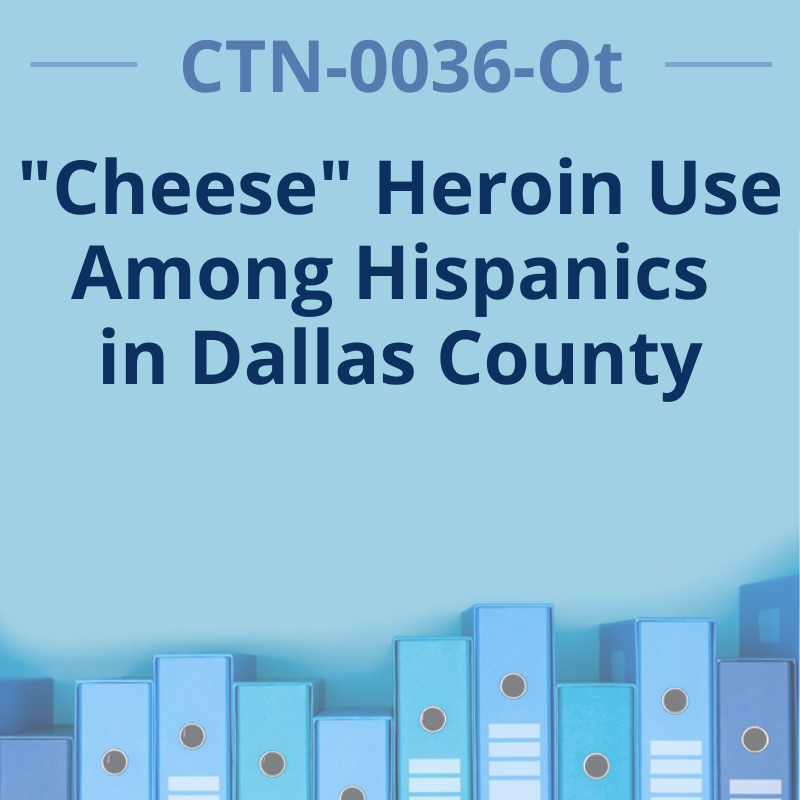CTN-0036-Ot: Epidemiology and Ethnographic Survey of “Cheese” Heroin Use among Hispanics in Dallas County

Carlos Tirado, MD
Lead Investigator
University of Texas, Southwestern Medical Center
carlos.tirado@utsouthwestern.edu
This study is in collaboration with the NIH National Center for Minority Health and Health Disparities. The study will focus on the development and implementation of a survey to further characterize the use of cheese-heroin among Hispanic youth in Dallas County. The survey will be administered to active cheese-heroin users in three CTPs within the Texas Node. The survey will characterize factors related to route(s) of administration, progression to physical dependence (opioid withdrawal syndrome), progression to IV drug use (HIV risk behavior), parental drug use, healthcare utilization, school performance, level of assimilation (both primary user and familial).
Primary Findings
Participants reported, on average, first using cheese heroin at age 13.5 years and daily use at age 14.2 years. The majority (74%) reported a previous overdose. They were also engaging in other risky behaviors, such as abuse of other drugs and unprotected sex. Adolescents being raised by caregivers other than both biological parents, who used drugs with relatives, and whose immediate family members have documentation to be in the United States fared worse on several indicators of drug use severity and other risky behaviors. The self-reported brief time period from first use to daily use strongly suggests the need for early prevention and rapid intervention efforts after first use of heroin in this population.

Results Article: Walker NR, et al. Characteristics of Mexican and Mexican American adolescents in treatment for “cheese” heroin use. Journal of Ethnicity in Substance Abuse 2014;13:258-272.
Related Resources
Node Involvement
Lead Node(s):
All Participating Nodes: